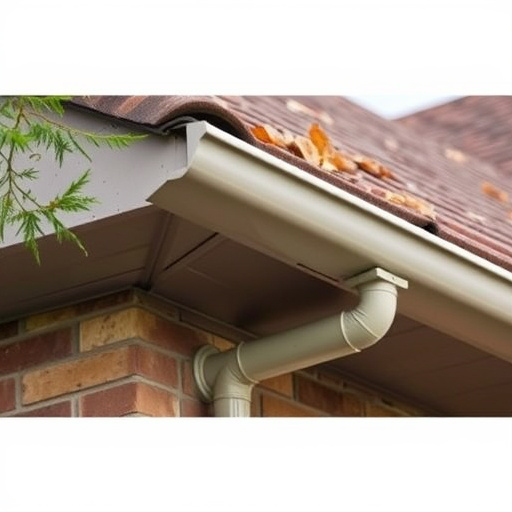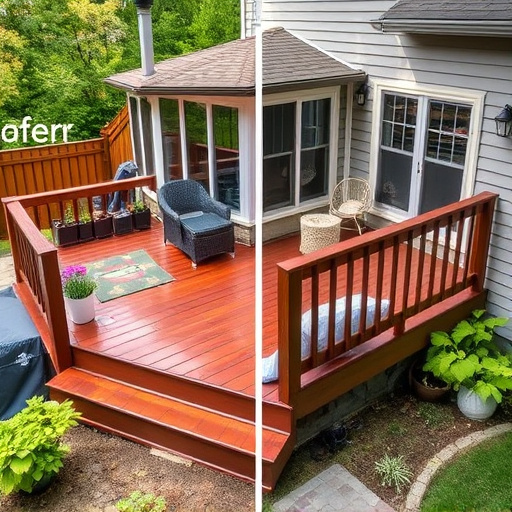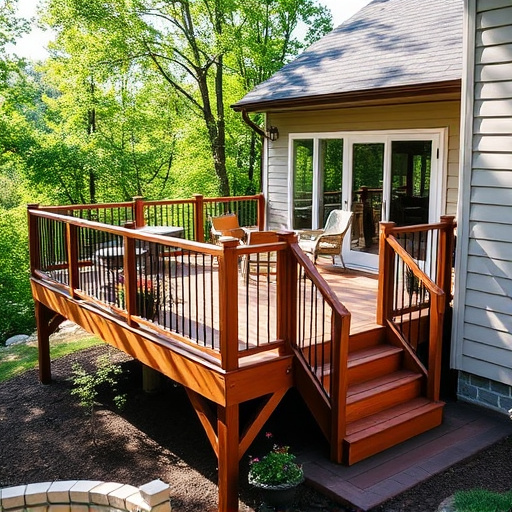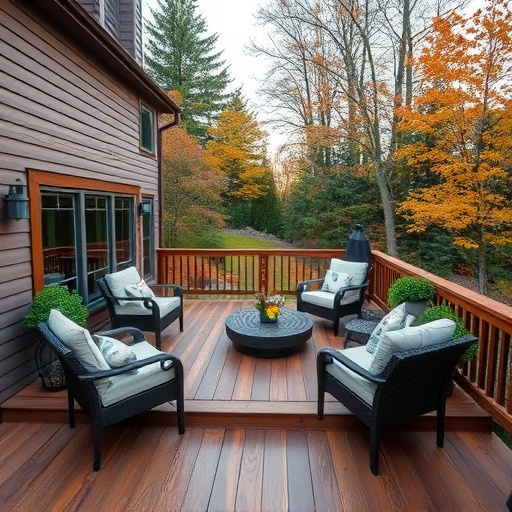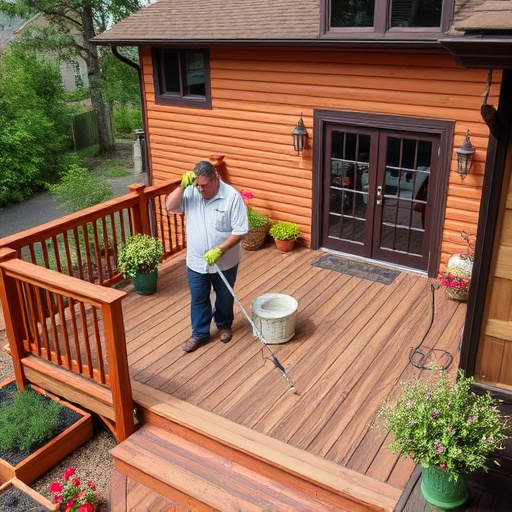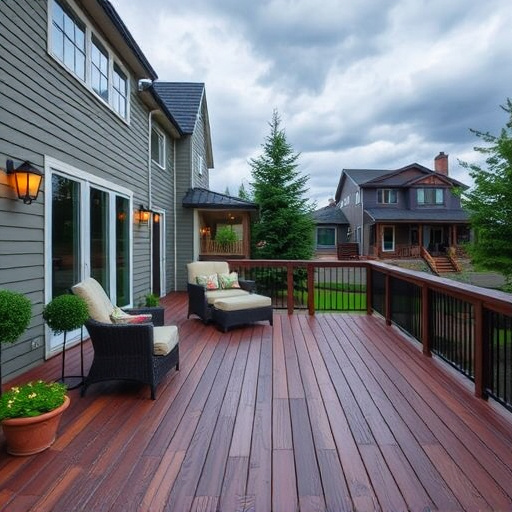Define deck's purpose and style to choose from natural wood, composite, or vinyl materials based on maintenance needs, climate, budget, and home design, ensuring a functional, attractive, and long-lasting outdoor space.
Choosing the right deck materials is essential for creating an outdoor living space that’s both functional and aesthetically pleasing. In this guide, we’ll help you navigate the options—from traditional wood to modern composite and vinyl—to ensure your deck aligns with your unique style and needs. We’ll explore key factors like durability, maintenance, budget, and environmental impact to empower informed decisions for your dream deck.
- Understanding Your Deck's Purpose and Style
- Material Options: Wood, Composite, and Vinyl
- Factors to Consider When Choosing Deck Materials
Understanding Your Deck's Purpose and Style

Before diving into the specifics of deck materials, it’s crucial to understand your deck’s purpose and style. A deck serves various functions, from a relaxed outdoor living space for family gatherings to an entertainment hub for hosting friends. The style could range from rustic and natural to modern and sleek, aligning with your home’s architecture and your personal aesthetic. For instance, if you envision a cozy retreat, natural wood decks might be the ideal choice, offering a warm and inviting ambiance. Conversely, a contemporary deck designed for entertaining could showcase composite materials or vinyl, known for their low-maintenance features and ability to complement modern architectural lines.
Knowing your needs will guide your selection of suitable deck materials, whether you’re considering home service solutions or exploring options for commercial roofing and exterior home improvements. Different materials come with varying levels of durability, maintenance requirements, and visual appeal. By clearly defining the purpose and style of your deck, you can make an informed decision that enhances both the functionality and aesthetics of your outdoor space.
Material Options: Wood, Composite, and Vinyl

When it comes to choosing deck materials, wood has long been the traditional go-to option for its natural beauty and timeless appeal. However, with evolving trends and technology, composite and vinyl have emerged as viable alternatives, offering distinct advantages that cater to modern preferences and lifestyles.
Wooden decks exude warmth and character, enhancing outdoor living spaces with a familiar charm. Traditionalists appreciate the ease of installation and versatility in styles, from rustic to elegant. Yet, wood requires regular maintenance like staining or sealing to protect against elements, including moisture and UV rays, which can lead to rot or warping over time. Composite materials address these concerns by combining wood fibers and plastic, creating a low-maintenance option that mimics the appearance of real wood without the hassle. Vinyl decks, another durable choice, are known for their longevity and resistance to fading, cracking, and warping, making them ideal for areas with extreme weather conditions or for those seeking a side (or front) deck solution requiring minimal upkeep, similar to siding replacement or commercial roofing applications.
Factors to Consider When Choosing Deck Materials

When choosing deck materials, several factors come into play to ensure your outdoor living space is both functional and aesthetically pleasing. Firstly, consider the climate in which your deck will be located. Different materials offer varying levels of durability against weather conditions; for instance, a composite wood deck may be more suitable for regions with high rainfall, as it’s resistant to rot and mold. Additionally, think about the level of maintenance you’re willing to commit to. Natural wood decks require regular cleaning and sealing but offer a classic, natural look. On the other hand, low-maintenance options like composite or vinyl are less prone to fading or warping but might have a more uniform appearance.
Budget is another crucial element. Deck materials span a wide price range, from economical options like treated wood to premium choices such as exotic hardwoods. Balancing your financial constraints with the desired look and durability is essential. Moreover, integrating deck materials with overall exterior home improvements should be considered. From siding services to residential roofing, coordinating these elements can enhance the curb appeal of your property. Ultimately, choosing the right deck materials combines functionality, aesthetics, and long-term investment, ensuring a space that not only looks great but also stands the test of time.
Choosing the right deck materials is essential for creating a functional and aesthetically pleasing outdoor space. By understanding your deck’s purpose, style preferences, and specific needs, you can navigate the various options available in the market today—from traditional wood to modern composites and vinyl. Each material has its unique advantages, durability ratings, and maintenance requirements, so considering these factors will ensure your new or renovated deck stands the test of time and enhances your outdoor lifestyle.



